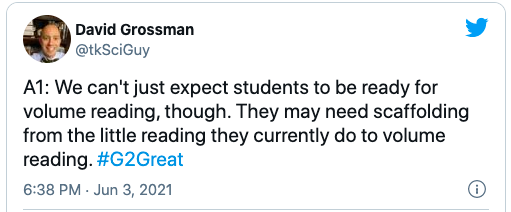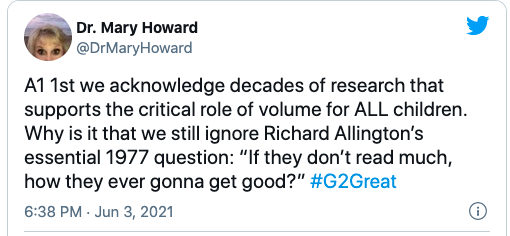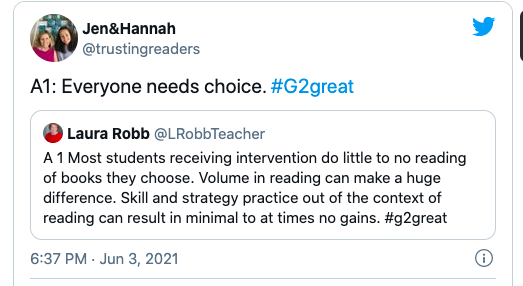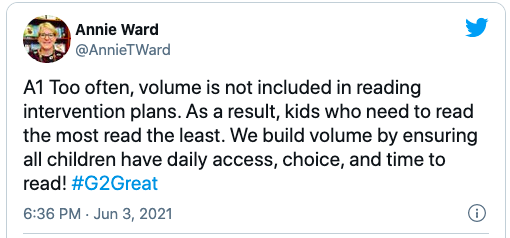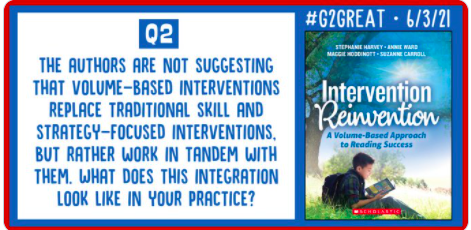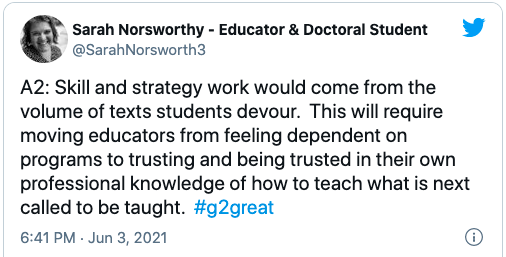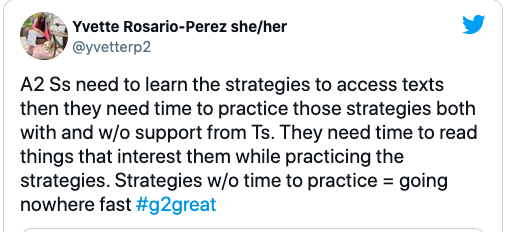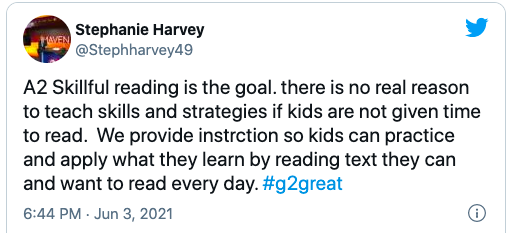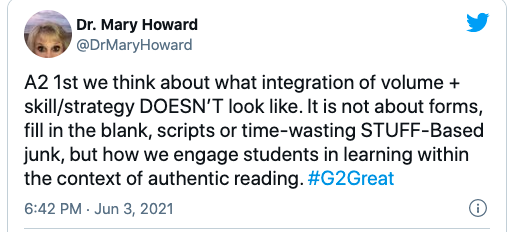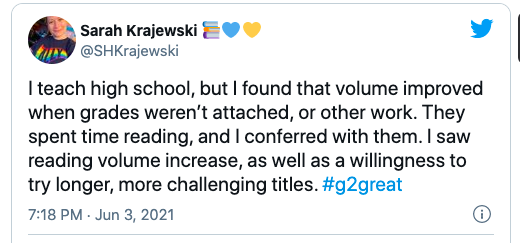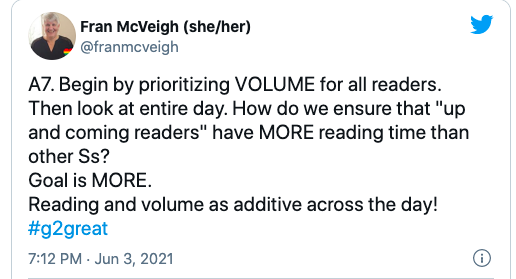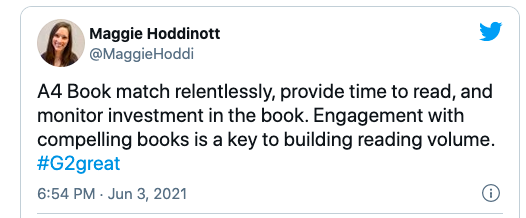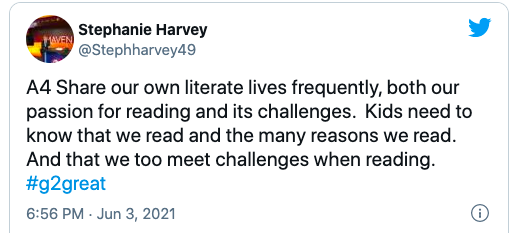
By Brent Gilson
A record of this powerful chat can be found here
This week the #G2Great chat focused on the new book by Stephanie Harvey, Annie Ward, Maggie Hoddinott and Suzanne Carroll, Intervention Reinvention: A Volume-Based Approach to Reading Success. I would strongly suggest checking this one out as it provides thoughtful frameworks to increase the volume of reading our students are doing while not missing out on the supports many need. The topic of how “intervention” has been carried out in many schools is one that continues to concern me to this day. This books provides a path forward that keeps all of our students in books, engaged and learning.
When I was teaching elementary school (it seems like ages ago) my school had a walk to intervention approach for our striving readers. We ran a Daily 5 system and students who needed more support would see me for one round and then go to intervention. This interventionist was, at the time, a literacy trained instructor so I saw nothing wrong with this one on one or small group instruction primarily taking place outside my classroom. Over time, however, the intervention assignment shifted to a virtually untrained Educational Assistant that was trying to do her best. In my final year at the school, I asked why it was that our students who needed the most support were both being removed from the trained teacher classroom and also losing out on that reading time. The answer I received was, “This is what works for her” So I pulled my students from that process and kept them with me for our Literacy periods. Students grew considerably because of multiple reasons but primarily I think it was because they had time to read, we found texts that caught their interests and they gained confidence because of their content knowledge. By providing time and texts my students flourished. Now as I work with middle and high school students my philosophy remains the same. Students need time, texts they are interested in and choice of material. With those things as well as lessons to help repair breakdowns in understanding intervention becomes less about deficits and more about growth.
As we began the chat the passion around this topic really came through in the participants responses.
While everyone is in agreement that reading is important there are vocal members of the teaching community that feign concern that by giving students time to read we are neglecting to teach them skills needed to be proficient readers. While this might happen I believe it is far less likely than some would have you believe. Many reflected on that balance throughout the chat.
As the chat continued we discussed different ways in which we can increase the reading volume in class. I start every day with 20 minutes of dedicated time to read. Teaching in High School I follow the lead of educators like Penny Kittle and Kelly Gallagher and confer with my students at different times throughout their reading time. Checking in to see how the books are going and asking some general questions. This helps identify areas they might need support but also helps to inform me about books they are interested in and what they are reading.
Over the last few years, choice has really become such a pivotal piece in the structure of reading time in my class. Students know that they are free to explore the texts they want and that I will search those books out for them if I do not have them on hand. As this topic came up many teachers reflected on the power choice has in driving reading engagement and helping increase the volume students read. A variety of other suggestions came up as we discussed how we can help our students find their reading identity and fuel that drive to read.
When we are trying to build a community of readers the last thing we need is a big gate with a sign saying, “Only proficient readers may enter here”. By building a reading community we can not only address those areas of concern but we can also bring students together through shared reading experiences. Providing opportunities for students to explore texts together and as a whole class.
I go back to my student who hated being pulled from class, hated everyone knowing he was leaving to get help. The shift in his reading identity and confidence that followed as more time was provided, choice in not just topics but also types of text. Rooting our work in his interests and providing as much reading as possible with support when needed. It was a recipe for success. Intervention Reinvention provides teachers with the blueprints to make these shifts. Away from the exclusionary practice of walking to intervention and inevitably reading less and towards a reading community with a flood of opportunities to work on the skills they need.
For more information on Intervention Reinvention, you can check out the scholastic website here and order a copy for yourself here


